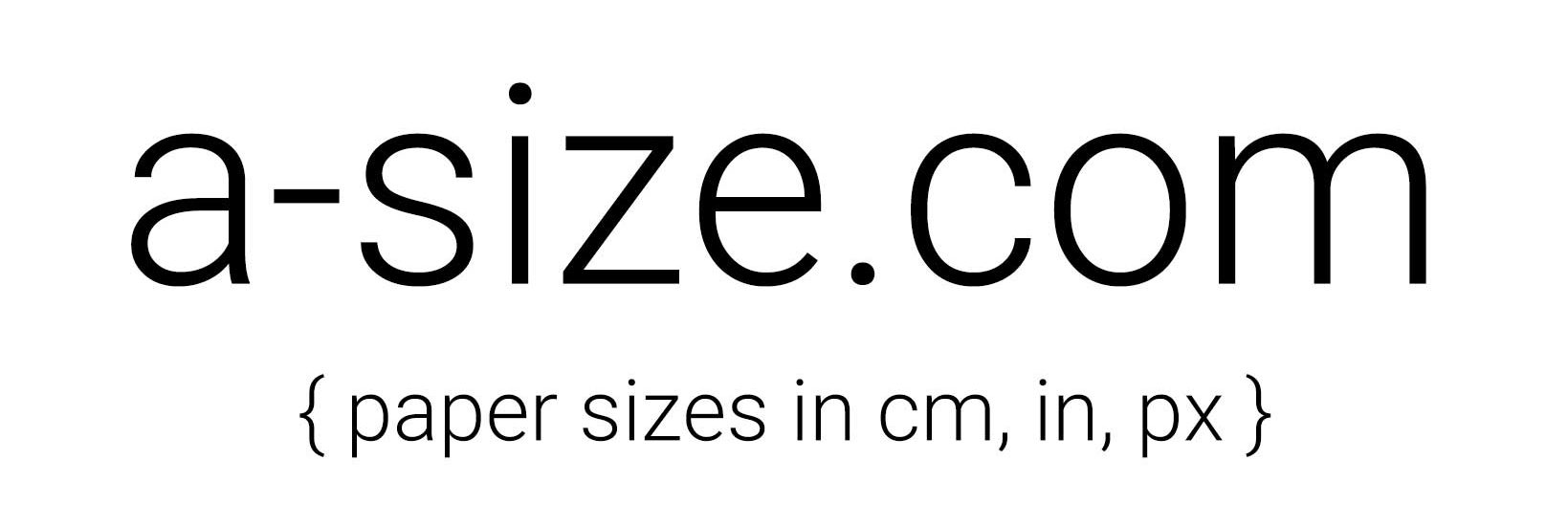ISO A European paper formats in millimeters (mm) and inches:
- A0: 841mm x 1189mm (33.11 inches x 46.81 inches)
- A1: 594mm x 841mm (23.39 inches x 33.11 inches)
- A2: 420mm x 594mm (16.54 inches x 23.39 inches)
- A3: 297mm x 420mm (11.69 inches x 16.54 inches)
- A4: 210mm x 297mm (8.27 inches x 11.69 inches)
- A5: 148mm x 210mm (5.83 inches x 8.27 inches)
- A6: 105mm x 148mm (4.13 inches x 5.83 inches)
- A7: 74mm x 105mm (2.91 inches x 4.13 inches)
- A8: 52mm x 74mm (2.05 inches x 2.91 inches)
- A9: 37mm x 52mm (1.46 inches x 2.05 inches)
- A10: 26mm x 37mm (1.02 inches x 1.46 inches)
ISO B European paper formats in millimeters (mm) and inches:
- B0: 1000mm x 1414mm (39.4 inches x 55.7 inches)
- B1: 707mm x 1000mm (27.8 inches x 39.4 inches)
- B2: 500mm x 707mm (19.7 inches x 27.8 inches)
- B3: 353mm x 500mm (13.9 inches x 19.7 inches)
- B4: 250mm x 353mm (9.8 inches x 13.9 inches)
- B5: 176mm x 250mm (6.9 inches x 9.8 inches)
- B6: 125mm x 176mm (4.9 inches x 6.9 inches)
- B7: 88mm x 125mm (3.5 inches x 4.9 inches)
- B8: 62mm x 88mm (2.4 inches x 3.5 inches)
- B9: 44mm x 62mm (1.7 inches x 2.4 inches)
- B10: 31mm x 44mm (1.2 inches x 1.7 inches)
Note that the ISO B series has a 1:1.41 aspect ratio, which means that the length of the paper is 1.41 times the width. These paper formats are commonly used in Europe for printing and publishing documents, such as brochures, flyers, and posters.
ISO C European paper formats in millimeters (mm) and inches:
- C0: 917mm x 1297mm (36.1 inches x 51.1 inches)
- C1: 648mm x 917mm (25.5 inches x 36.1 inches)
- C2: 458mm x 648mm (18.0 inches x 25.5 inches)
- C3: 324mm x 458mm (12.8 inches x 18.0 inches)
- C4: 229mm x 324mm (9.0 inches x 12.8 inches)
- C5: 162mm x 229mm (6.4 inches x 9.0 inches)
- C6: 114mm x 162mm (4.5 inches x 6.4 inches)
- C7: 81mm x 114mm (3.2 inches x 4.5 inches)
- C8: 57mm x 81mm (2.2 inches x 3.2 inches)
- C9: 40mm x 57mm (1.6 inches x 2.2 inches)
- C10: 28mm x 40mm (1.1 inches x 1.6 inches)
It’s worth noting that the ISO C series is primarily used for envelopes, and is not commonly used for printing documents or other applications. The A and B series are more commonly used for printing and other purposes.
American paper formats in inches and mm
Here is a list of the most commonly used paper formats in North America, along with their dimensions in both inches and millimeters:
- Letter: 8.5 inches x 11 inches / 215.9mm x 279.4mm
- Legal: 8.5 inches x 14 inches / 215.9mm x 355.6mm
- Tabloid or Ledger: 11 inches x 17 inches / 279.4mm x 431.8mm
- Junior Legal or Half Letter: 5.5 inches x 8.5 inches / 139.7mm x 215.9mm
- Government Letter: 8 inches x 10.5 inches / 203.2mm x 266.7mm
- Government Legal: 8 inches x 14 inches / 203.2mm x 355.6mm
- ANSI A: 8.5 inches x 11 inches / 215.9mm x 279.4mm
- ANSI B: 11 inches x 17 inches / 279.4mm x 431.8mm
- ANSI C: 17 inches x 22 inches / 431.8mm x 558.8mm
- ANSI D: 22 inches x 34 inches / 558.8mm x 863.6mm
- ANSI E: 34 inches x 44 inches / 863.6mm x 1117.6mm
Note that while the Letter and Legal formats are commonly used in North America, other formats such as the ANSI formats are primarily used for engineering and architectural drawings. The dimensions given here are the standard dimensions for each format, but there may be slight variations in practice due to manufacturing tolerances.
Paper aspect ratio
Paper formats are typically defined by their ratio, which is the proportion of the length to the width of the paper. The most commonly used paper format ratio is the ISO A series, which has a ratio of 1:1.41. This means that the length of the paper is 1.41 times the width.
Other paper format ratios include:
- ISO B series: 1:1.41 (same as the A series)
- ISO C series: 1:1.29 (for envelopes)
- North American paper sizes: 1:1.29 (for Letter and Legal sizes), 1:1.55 (for Tabloid size)
It’s worth noting that not all paper formats have a specific ratio. For example, the ANSI paper sizes used in North America are defined by their length and width in inches, rather than a specific ratio. However, these sizes can still be converted to a ratio by dividing the length by the width.
